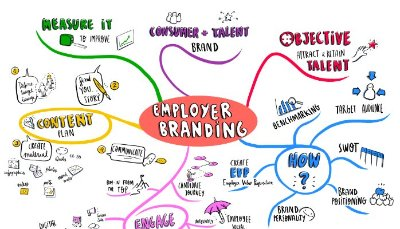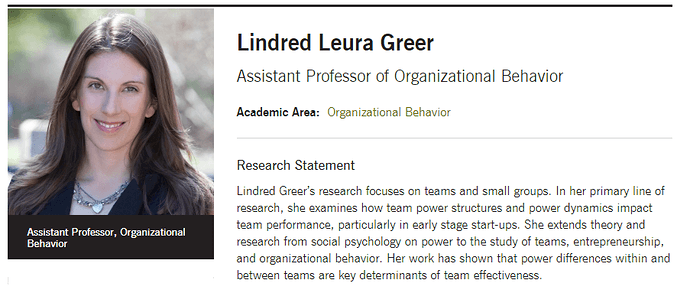Dalam membangun sebuah startup, merekrut anggota tim awal merupakan hal strategis yang akan membantumu merealisasikan tujuan perusahaan. Di dunia startup, kamu dituntut untuk selalu lincah dalam menyikapi keadaan yang dinamis dan perubahan pasar. Oleh karena itulah kamu perlu merekrut sumber daya manusia yang lincah, bisa beradaptasi dengan perubahan, dan mencari tantangan karier.
Berikut ini adalah cara membangun startup dari sisi perekrutan karyawan dan pengembangan tim:
1. Pentingnya pendekatan dari bawah ke atas

Ini merupakan langkah awal dalam membentuk fondasi perusahaan. Dengan pendekatan dari bawah ke atas, kamu harus membangun area-area fungsional dengan dukungan sumber daya manusia, yakni mereka yang memiliki kemampuan eksekusi yang tinggi serta mau untuk bekerja keras.
Carilah talenta yang berkeinginan kuat, keterampilan yang rendah, dan belum pernah berkecimpung di industri ini sebelumnya. Orang-orang ini nantinya akan dipupuk menjadi kandidat karyawan yang sangat potensial bagi perusahaan. Berikanlah gaji yang impresif untuk jabatan yang diberikan. Jumlah gaji ini memang lebih rendah dari standar gaji di pasaran untuk posisi tersebut.
Dengan meningkatnya jabatan dan jumlah gaji, karyawan potensial ini akan bersemangat dan berusaha untuk mencapai tujuan-tujuannya. Hal ini bisa meningkatkan rasa memiliki terhadap perusahaan.
Kamu harus memulai semuanya di level jabatan, kesempatan, dan eksposur yang sama. Dengan membimbing karyawan-karyawan potensial ini, kamu bisa melahirkan pemimpin-pemimpin masa depan yang bernilai.
Kamu pasti bertanya-tanya, mengapa saya memilih pendekatan dari bawah? Hal ini disebabkan oleh dua alasan.
-
Pertama, membangun SDM dengan pendekatan dari atas (seperti merekrut orang-orang berpengalaman) memerlukan biaya yang sangat besar. Biasanya mereka juga tidak mau bersusah payah bekerja keras.
-
Kedua, umumnya mereka tak bertahan lama karena akan mencari peluang kerja lebih baik.
Sebuah studi dari Universitas Harvard membahas bagaimana pendekatan ini membantu pelatih Sir Alex Ferguson meningkatkan prestasi klub sepak bola Manchester United. Dalam studi tersebut, Ferguson acap kali merekrut dan melatih pemain baru dari nol. Mereka adalah pemain-pemain potensial yang adaptif dalam mengeksplorasi peluang dan strategi baru demi memenangkan pertandingan.
2. Mulailah dengan tim inti

Merekrut anggota tim biasanya memerlukan proses penyaringan di HRD atau melalui jasa konsultan SDM . Namun hal ini cenderung memakan waktu dan biaya, sehingga kurang efektif diterapkan di sebuah startup di tahap awal.
Cari tahu siapa saja pelamar terbaik dan apa saja strategi yang bisa diterapkan, selain bekerja sama dengan konsultan SDM. Meski demikian, kamu juga bisa meminta konsultan SDM untuk menyediakan tenaga perekrut untuk kantormu. Ini bisa membantu perekrut memahami kultur perusahaan, serta membantunya untuk menyebarluaskan lowongan kerja.
3. Mengetahui waktu yang tepat
Setelah tim inti terbentuk, langkah berikutnya adalah memastikan perusahaanmu untuk tidak meningkatkan Gross Merchandise Value (GMV), kecuali jika perusahaanmu benar-benar sudah mulai meraup keuntungan.
Untuk itu, pastikan salah satu anggota tim inti menjadi tenaga perekrut untuk menyeleksi tiap kandidat. Dengan cara ini, kamu akan menemukan seratus karyawan pertama yang sesuai dengan kultur perusahaan dan berkeinginan untuk terus maju.
Sampai suatu hari nanti, kamu perlu karyawan-karyawan baru untuk mengisi puluhan posisi baru, saat itulah kamu bisa mempekerjakan perekrut. Penting untuk diingat bahwa proses perekrutan harus didorong oleh pertumbuhan. Perekrutan karyawan tidak dilakukan untuk mendorong pertumbuhan.
Penting untuk diingat bahwa proses perekrutan harus didorong oleh pertumbuhan. Perekrutan karyawan tidak dilakukan untuk mendorong pertumbuhan.
4. Pertahankan karyawan berkinerja baik
Seiring perkembangan startup, sejumlah karyawan akan beranjak pergi meninggalkan perusahaan dengan alasan yang bermacam-macam. Penting untuk mengidentifikasi kepribadian dan kultur terbaik untuk perusahaanmu, terlepas dari tinggi rendahnya tingkat pengunduran tinggi karyawan
Di sisi lain, tingginya angka pengunduran diri sendiri bisa menjadi penanda untuk mencari orang yang tepat. Jika pengunduran diri ini terjadi pada anggota inti, artinya ada masalah pada proses bimbingan yang tidak terdeteksi.
Jika angka pengunduran diri tergolong rendah, kamu bisa menugaskan tanggung jawab baru dan memberi kesempatan bagi karyawan untuk mengeksplorasi hal-hal lainnya.
Meski demikian, jika karyawanmu sudah mencapai lebih dari tujuh puluh orang, tentukan batas jumlah karyawan yang sesuai. Kamu tidak bisa melewati batasan tersebut, kecuali bila pendapatan perusahaan tumbuh tiga kali lipat lebih besar.
Dengan kata lain, kamu perlu mendorong karyawan dengan kinerja baik untuk terus berkarya, dan menyingkirkan karyawan berkinerja buruk. Ini akan membuat karyawan andal bertahan di perusahaanmu.
5. Ciptakan recruitment branding bagi perusahaan

Recruitment branding adalah upaya membuat pencitraan atas pengalaman bekerja di perusahaan startup yang kamu dirikan. Upaya pencitraan ini dibangun berdasarkan kultur kerja perusahaan, kesempatan yang sama, pemberian ganjaran (reward) untuk kinerja yang baik, tantangan serta jabatan yang menarik, dan lain sebagainya.
Semakin brand perusahaanmu dikenal, maka semakin banyak orang yang ingin bekerja di sana. Namun, jangan sampai pencitraan tersebut membuat perusahaanmu seperti “sumber uang”. Pastikan bahwa karyawan yang bergabung dengan perusahaanmu benar-benar menginginkan peningkatan karier, bukan sekadar mengumpulkan uang.
Jangan sampai pencitraan tersebut membuat perusahaanmu seperti “sumber uang”. Pastikan bahwa karyawan yang bergabung dengan perusahaanmu benar-benar menginginkan peningkatan karier, bukan sekadar mengumpulkan uang.
6. Menjadi perusahaan dengan tolok ukur gaji
Menjadi perusahaan dengan tolok ukur (benchmark) gaji merupakan fitur pembeda kamu di antara perusahaan lainnya. Gaji yang kamu tawarkan berkisar antara dua puluh hingga tiga puluh persen dari standar gaji di pasaran. Hal ini akan menarik perhatian calon karyawan yang ingin meningkatkan kariernya dengan cepat.
Selain itu perlu ada juga pemberian bonus lain, seperti bonus atas loyalitas karyawan, insentif yang transparan, dan reward. Hal ini bertujuan untuk melihat mana karyawan dengan berperforma baik dan mana yang memiliki kinerja buruk.
Perlu digarisbawahi pula bahwa pembajakan karyawan dari perusahaan lain seharusnya tidak dilakukan. Karena pembajakan ini tidak berkontribusi terhadap pertumbuhan startup, tetapi justru menciptakan beban baru.
7. Bangunlah tim kamu

Memupuk kebersamaan tim guna meningkatkan efisiensi kerja adalah hal yang sangat penting di sebuah perusahaan. Kamu bisa membuat satu sesi untuk mendengarkan ide-ide dari tim kamu. Kegiatan ini tidak hanya berguna untuk meningkatkan efisiensi, tapi juga menambah semangat mereka dalam bekerja.
Aktivitas seperti makan siang bersama, bermain game, dan pergi nongkrong juga bisa kamu lakukan untuk merekatkan hubungan antar anggota tim. Menjadi teman di lingkungan kantor akan membuat kehidupan mereka lebih baik dan harmonis. Hal ini bisa mengurangi kecemburuan di antara mereka dan mendorong kompetisi yang sehat antar karyawan.
Atensi kecil seperti memberi coklat atau email dengan ucapan apresiatif juga dapat memotivasi mereka untuk lebih bersemangat bekerja. Orang-orang inilah yang akan bekerja keras, sehingga kelak dapat meningkatkan pertumbuhan perusahaan.
8. Menggaet talenta dari luar

Inilah saatnya untuk membangun tim level atas di startup kamu. Pastikan bahwa tim inti dalam startup kamu mengetahui hal ini. Penting pula untuk memberikan kesempatan agar tim inti membuktikan kemampuannya sebelum kamu memberikan jabatan yang lebih tinggi.
Jika tim inti dirasa belum mumpuni untuk mengerjakan tanggung jawab baru, perusahaan perlu memberikan bimbingan lebih banyak. Pastikan bahwa mereka dapat mengerjakan hal-hal yang sesuai dengan kemampuannya.
Menggaet karyawan senior dari luar untuk bergabung hanya dapat dilakukan bila tim inti di startup kamu telah dibimbing dengan baik. Pastikan pula bahwa karyawan senior tersebut memiliki keterampilan lain yang tidak dimiliki oleh tim inti.
Penutup
Pada akhirnya, membangun sebuah startup tidak hanya tentang menciptakan solusi untuk berbagai masalah, tetapi juga mengajak orang-orang dengan nilai, gagasan, dan visi yang sama untuk bekerja demi mencapai tujuan bersama.
Seratus karyawan pertamamu adalah orang yang perlu berjalan berdampingan bersamamu dalam jangka waktu lama. Dinamika kehidupan startup akan mempersatukan karyawan yang proaktif, berorientasi pada tindakan, dan siap bekerja keras.




